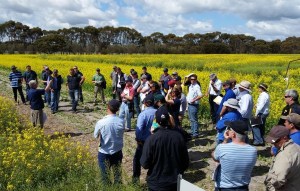273 – Behaviour change comes in pairs
Some key factors that drive adoption of new practices come in pairs: one aspect related to the performance of the new practice, and one aspect related to how much people care about that performance. Many models of adoption miss this, including famous ones.
Whatever work or hobbies we do, there are regularly new practices coming along that we are encouraged to adopt: new technologies (e.g. a new iPhone, an auto-steer crop harvester), or different behaviours (e.g. reducing our usage of energy or water, changing the allocation of land to different crops).
The agricultural examples above reflect that some of my research is on adoption of new practices by farmers, but the issue I’m talking about today is relevant in all spheres where people adopt new practices.
It is well recognised that people vary in the personal goals that drive their choices about whether to adopt new practices that are promoted to them. Amongst commercial farmers, for example, there are differences in the emphases they give to profit, risk and environmental outcomes.
Any attempt to understand or model adoption of new practices needs to recognise the potential importance of these different goals. Many studies do include variables representing these three goals, and sometimes others.
However, it is less often recognised that there are two aspects to each of these goals when looking at a new practice:
- The extent to which the new practice would deliver the outcome measured by that goal: more profit, less risk, or better environmental outcomes.
- How much the decision maker cares about those particular outcomes.
These two aspects are closely linked. They interact to determine how attractive a new practice is, but they are distinctly different. One is not a proxy for the other.
 For example, suppose a farmer is considering two potential new practices for weed control. The farmer judges that new practice A is much riskier (less reliable) than new practice B.
For example, suppose a farmer is considering two potential new practices for weed control. The farmer judges that new practice A is much riskier (less reliable) than new practice B.
How much will this affect the farmer’s decision making? That depends on the farmer’s attitude to risk. For a farmer who has a strong aversion to risk, practice B will be strongly favoured, at least from the risk perspective. (Other goals will probably also come into play as well.) For a farmer who doesn’t care about risk one way or the other, the difference in riskiness between practices A and B is of no consequence. Some farmers (a minority) have been found to be risk-seeking, so they would prefer practice A.
The same sort of pattern occurs with other goals as well. The attractiveness of a new practice depends on how much difference it makes to profit and on how strongly the farmer is motivated by profit. Or how much it affects the environment and how strongly the farmer cares about the environment.
Amongst the thousands of research studies of farmer adoption of new practices, most represent only one goal-related variable where two are needed. For example, they include a measure of risk aversion, but ignore differences in the level of riskiness of the new practice amongst different adopters. Or they represent differences in the profitability of the new practice, but not differences in how much the adopters care about profit.
It doesn’t help that the issue is not recognised in common conceptual frameworks used by social scientists studying adoption behaviour, such as the Theory of Reasoned Action (Fishbein and Ajzen 1975) and the Theory of Planned Behaviour (Ajzen 1991).
It should be recognised in a sound economics framework (e.g. Abadi Ghadim and Pannell 1999 do so for risk), but it often isn’t included in the actual numerical model that is estimated.
The only framework I’ve seen that really captures this issue properly is our framework for ADOPT – the Adoption and Diffusion Outcome Prediction Tool. Hopefully this insight can diffuse to other researchers over time.
Further reading
Abadi Ghadim, A.K. and Pannell, D.J. (1999). A conceptual framework of adoption of an agricultural innovation, Agricultural Economics 21, 145-154. Journal web page ◊ IDEAS page
Ajzen, I. (1991). The theory of planned behavior, Organizational Behavior and Human Decision Processes 50, 179-211.
Fishbein, M. and Ajzen, I. (1975). Belief, Attitude, Intention and Behavior: An Introduction to Theory and Research. Reading, MA: Addison-Wesley.